It was the year 1911 when a scandal shook Jerusalem and, by extension, the entire Palestinian region, leading the Ottoman Empire to have a friction with the United Kingdom. Members of the Parker Expedition, an archaeological mission excavating in the city, were caught working at night and disguised as Arabs on the Haram al-Sharif or Temple Mount, where the Wailing Wall and Esplanade of the Mosques are located. Apart from being illegal, it was a desecration and caused noisy demonstrations of international revulsion that forced those responsible to flee hastily by boat. The leader of those fugitives was called Montagu Parker and he was an Englishman of noble birth who was involved in treasure hunting and what he was really looking for was the lost riches of King Solomon.
Some time ago we dedicated an article to Roy Chapman Andrews, an American adventurer who provided paleontological remains to the New York Museum of Natural History in the 1930s and who happens to be the character who inspired Lawrence Kasdan, the screenwriter of In Search of the lost ark , for its protagonist, Indiana Jones. Actually, the intrepid screen archaeologist had more sources, some purely cinematographic (such as the Charlton Heston from the movie The Secret of the Incas ) and others from his own scientific branch; Among the latter figure, without a doubt, Montagu Parker.

Montagu Brownlow Parker, 5th Earl of Morley, was born in 1878, at the height of the British Empire, as the second son of Albert Edmund Parker and Margaret Holford. The father was one of the leaders of the Liberal Party and was part of two Gladstone governments in that alternation of power that he carried out with the Conservative Party, first with Disraeli and then with Gascoyne-Cecil, typical of the second half of the 19th century:in the first (1880-85) was Undersecretary of State for War and in the second (a few months in 1886) Commissioner of Public Works.
It is therefore understood that the young Montagu received an expected education in one of the best schools in the country, Eton College, from which came twenty prime ministers, princes, academics, writers, diplomats and soldiers. It is also easy to deduce that, after completing this training period, Montagu began another military career by joining the Gloucester Regiment, from which he graduated as a lieutenant in 1898. Assigned to the Grenadier Guards the following year, between 1900 and 1902 he took part in the Second Boer War, being slightly wounded at Thaba 'Nchu. After the war, he returned to England as an aide-de-camp to Lieutenant General Laurence Oliphant, and in 1907 he was promoted to captain.
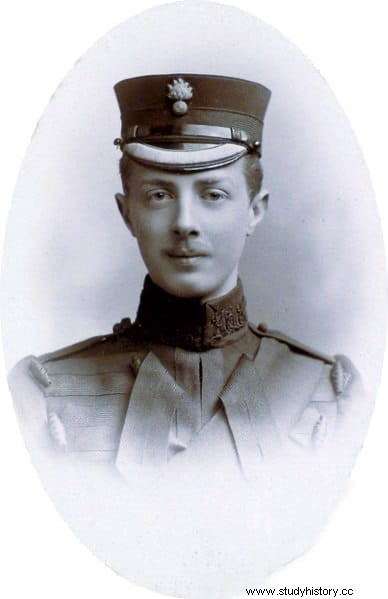
Meanwhile, his father died in 1905, so the earl title was inherited by his eldest son, Edmund Robert (in addition, there were two other siblings in the family:Mary Theresa and John). By this time Montagu was beginning to show a tendency to eccentricity, imagining the most extravagant undertakings in search of extra income to satisfy his taste for a life of luxury. He was in it when, in 1908, he met Valter Juvelius in London, a Finnish writer, poet, topographer and translator from Swedish who was in the British capital presenting the thesis with which he had obtained a doctorate in philosophy from the University of Helsinki.
The play was titled Judarnes tideräkning i ny belysning (Timeline of the Jews under a new approach) and was based on the transcription of a coded passage from the Book of Ezekiel that he had found in a library in Constantinople, completing it with another fragment preserved in a museum in St. Petersburg and confronting it with the text of the Mishnah (a compilation of Hebrew oral traditions from the Second Temple period, that is, between the years 536 BC-70 AD, redacted at the beginning of the 3rd century AD, by Rabbi Yehuda HaNasi to prevent them from falling into oblivion).
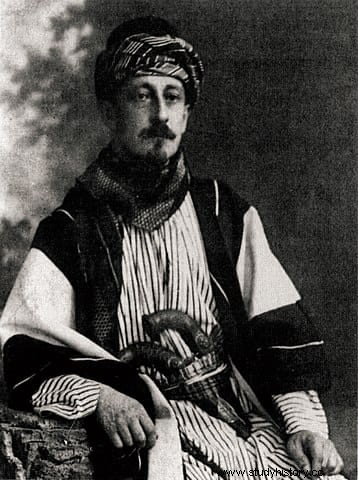
The important thing was that, according to Juvelius, the translation of that piece revealed exactly the place where Solomon's treasure remained hidden, lost, the Jewish monarch of proverbial wisdom whose life is narrated in the Bible (in the Book of Kings and the Second Book of Chronicles ). This is the only documentary source, since the Koran It is much later and there are no inscriptions or archaeological record that confirm the biblical data, despite the fact that texts such as Ecclesiastes are attributed to the sovereign. , the Book of Proverbs and the Song of Songs .
Solomon's reign was considered the greatest splendor and wealth in the history of the Kingdom of Israel, the result of trade relations with Saba and Phoenicia. The Book of Kings , for example, says that in a single year he collected six hundred and sixty-six talents of gold, which would be equivalent to about twelve tons of that precious metal, taking into account that each talent was worth about eighteen kilograms. Therefore, the idea that Solomon had accumulated a fabulous treasure that remained hidden in some forgotten place, awaiting his discovery, came from far back in time.
That site was believed to be buried in Jerusalem, in a vaulted cache under what is now known as the Haram al-Sharif, the Temple Mount. It is the orographic elevation on which Solomon built his fabulous sanctuary, destroyed in 587 BC. by the Babylonian Nebuchadnezzar II and rebuilt by Zerubbabel five decades later, when Babylon fell to the Persians and Darius I allowed the Jews to return to his land (Herod the Great he enlarged it in the 1st century B.C. and the Romans destroyed it in the year 70 AD, leaving the Wailing Wall as the only vestige).
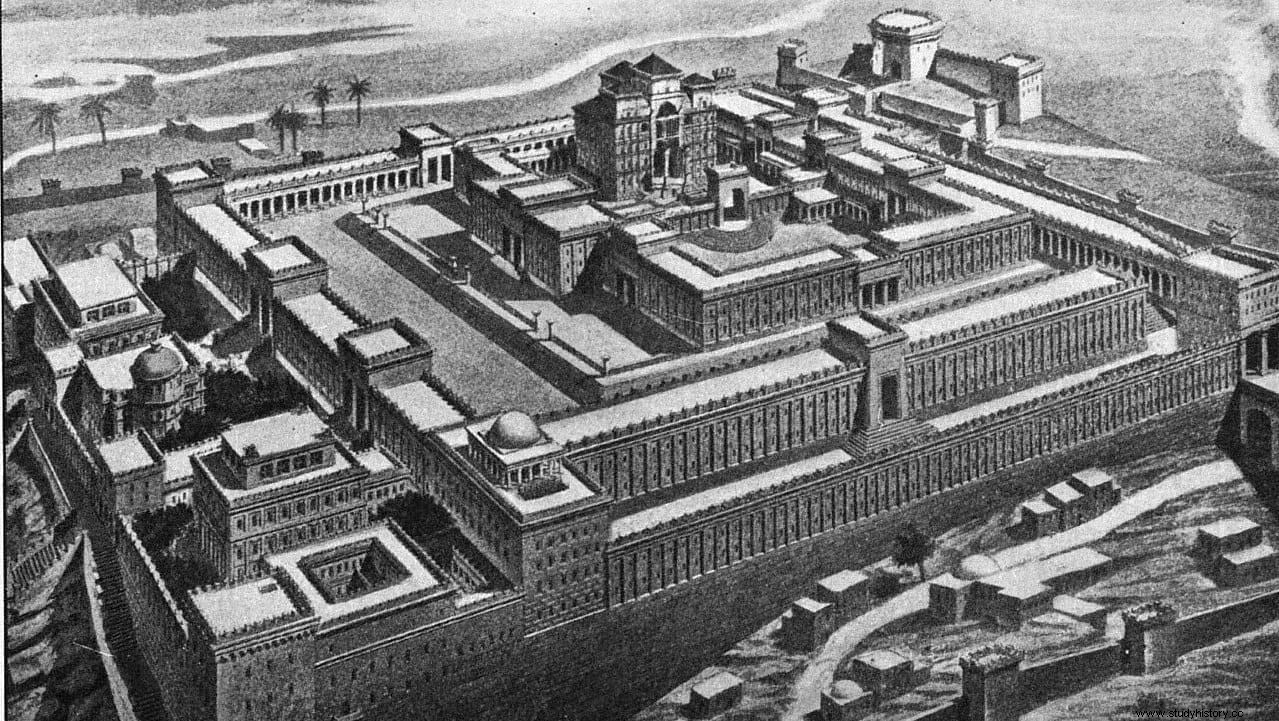
The temptation to find not only the treasure itself, but also the Ark of the Covenant (where the Tablets of the Law were kept), and even a mythical manuscript that would contain the truth about the resurrection of Christ, was irrepressible for Montagu, who He established a relationship with Juvelius through Johan Millén, a Swedish engineer dedicated to the manufacture of soap in Antwerp, and a soldier of the same nationality, a certain Captain Hoppenrath, who claimed to have explored the Congo. Both smelled the gold and supported the Finn, who had first made the offer -unsuccessfully- to the Young Turk government (Jerusalem was under Ottoman rule).
Instead, Montagu enthusiastically agreed to organize an expedition, and after resigning from his position in the Granadier Guards , he went on a frantic fundraising spree, tapping various wealthy sponsors. They included the Duchess of Marlborough, Consuelo Vanderbilt, and the American food industrialist Philip Armour, from whom he got the sum of £25,000, although it seems he could have gotten much more had he not turned down some investors who came forward. The absence of a true scientific basis was not an obstacle, as can be seen, to finding financing at that time.
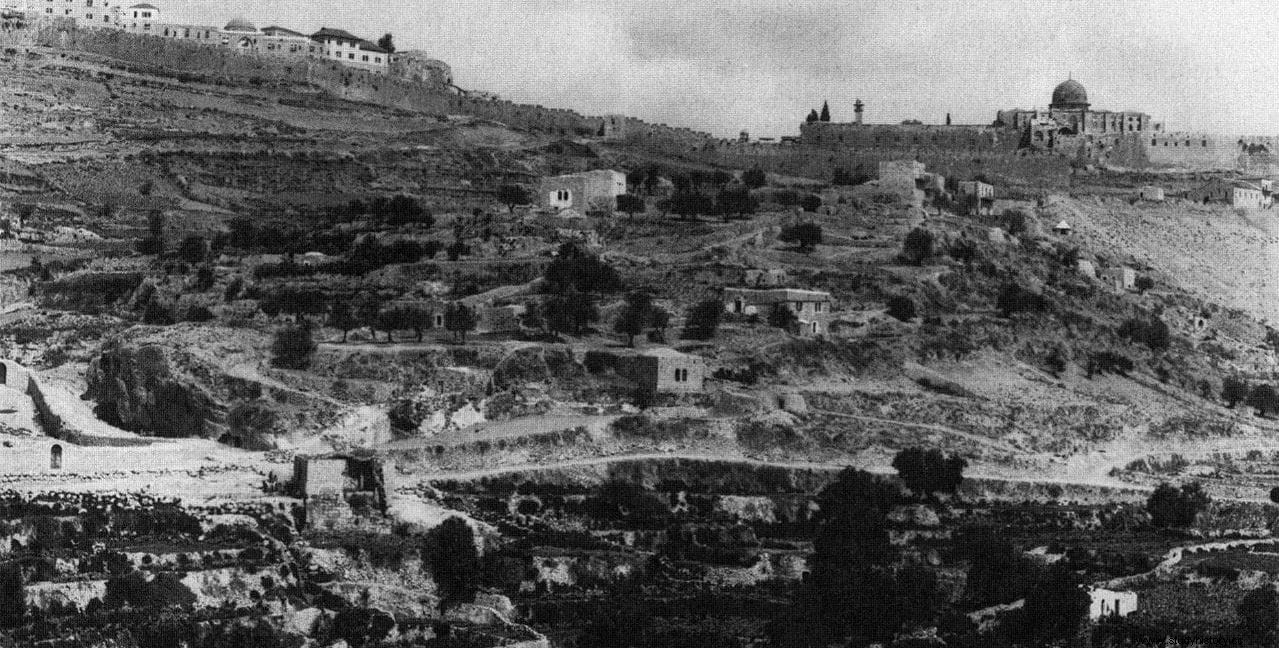
This was because, at that time, Jerusalem was subject to several excavations taking advantage of a hydraulic network that allowed the modern city to be avoided and thanks to which important discoveries had been made throughout the 19th century:in 1867, Edward Robinson found the Siloam tunnel, which was assimilated to Hezekiah's tunnel (the canal that carried water to Jerusalem); in 1867, Charles Warren found the well that bears his name; and, in 1880, Conrad Shick unearthed the Siloam Inscription (the oldest epigraphic piece found in Israel up to that date).
It is not surprising, therefore, that, in such a context, in 1885, a civil servant turned writer named Henry Ryder Haggard used all that historicist fever as a basis for, combined with the mineral and diamond riches that he had had occasion to see in his destiny South African, publish a successful novel titled King Solomon's Mines , which he wrote in just a month and which became an instant and huge publishing success.
Returning to the subject, the Warren Well, together with the Gihon Fountain (a spring that supplied Jebus with water and irrigated the entire Kidron Valley, but which, being intermittent, prompted the construction of the Siloam Pool, with the one that was connected through the aforementioned Hezekiah Tunnel), were going to be the starting point for what was called the Parker Expedition, which was already in the process of organization.
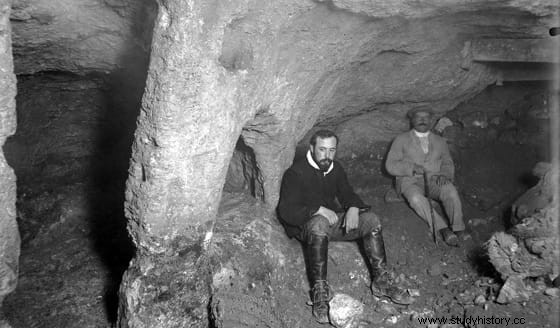
That autumn of 1908 a company named after the initials of the main participants was formed, JMPFW Ltd, corresponding to Juvelius, Millén, Parker, Fort and Waughan, although the Finn had more shares than the rest, a quarter. They obtained the approval of the Ottoman Empire in exchange for half of the company's shares and hired the services of Hagop Makasdar, an interpreter recommended by the grand vizier, who also assigned them two supervisors (Abdulaziz Mecdi Efendi and Habip Bey, future leaders of the conservative party).
To carry out the work it was necessary to buy the land, a real problem because it had two hundred owners, which caused suspicion in the local governor, who had not been informed. The intervention of the grand vizier was necessary for an expropriation to be carried out, with the excuse of building a hospital and a school there. The number of members of the expedition had increased with various nobles, soldiers and seers, some complaining about the discomfort of the house in which they were staying, others determined to mentally glimpse where the treasure was, although they were not paid much attention (one pointed to Mount Ararat, which was not very close at hand).
More important was the incorporation of Louis-Huges Vincent, a Dominican priest considered one of the world's greatest experts in biblical archaeology, who in 1911 would publish Underground Jerusalem (Underground Jerusalem), the official report of that adventure. In fact, he was the only authentic archaeologist and under his supervision -not direct direction- the excavation began in August 1909 with the initial opposition of the neighbors (because it was necessary to temporarily cut off the water supply), finally solved by compensating them by hiring many of them with good salaries.

The rest of the team, lacking adequate knowledge, spent most of their time entertaining themselves as best they could (noisy night parties, betting on the amount of land to extract each day, target shooting with oranges, practical jokes on the muleteers...) , which soon caused harsh criticism from the local press. The arrival by yacht, the placement of guards on the perimeter, the secret tone with which everything was carried out and a strike resolved with a trial of those responsible, to which Montagu appeared with the red jacket and the grenadier's bear-hair morion , escorted by a guard of Ottoman spearmen, were things that did not help either.
The first season of excavations ended with no more results than the promising discovery of a tunnel that later turned out to be a simple sewer and an average daily expense of four thousand dollars. In August 1910, the second began, emptying the Gihón Fountain; as the water was diverted to the neighbors, the measure was welcome, but the tunnels that were opened later did not obey a logical plan, which caused criticism to resurface and forced the local authorities to be bribed when the two Turkish officials, in disagreement with the system and suspicious of the lack of scientific rigor, they decided to return to Constantinople.

Even the good seemed to turn bad. Some ancient tombs and remains of fortifications appeared that were impossible to hide from other nearby expeditions. Alerted to what was really being sought, the news reached Baron Edmund de Rothschild, a philanthropic banker who had subsidized Jewish settlements in the city and who, disgusted that Solomon's treasure would end up in Gentile hands, bought the land. where the works were to run, prohibiting access to them and commissioning their own excavations to the French archaeologist Raymond Weill (who, in addition to being a former student of the prestigious Gaston Maspero, was Jewish).
Since the baron gave Parker until the fall of 1911 and then he would have to give up his site, the effort was redirected to the Temple Mount, bribing the new governor, Azmi Bey, and Sheikh Khalil al-Zanaf, the hereditary guardian. of the al-Aqsa mosque, to obtain their authorization, since it was a prohibited area. Parker and his companions began to dig at night, dressed in the Arab style, again without coherence:they followed a direction and when they found an obstacle they changed it; the only discovery was the so-called Well of Souls, an artificial cave where the Ark of the Covenant was supposedly deposited (which will sound familiar to those who have seen In search of the lost ark ); it turned out to be tiny and empty on top of that.
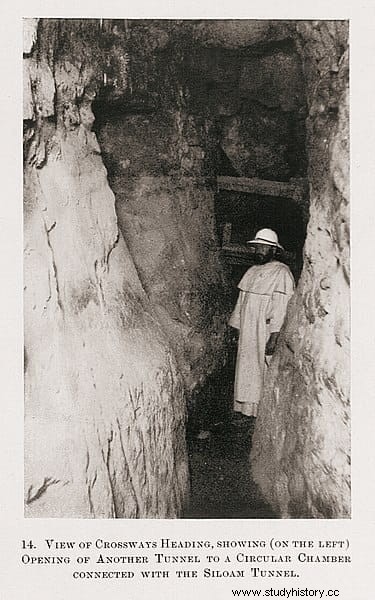
One night, a guard who had not been bribed caught them red-handed, taking out sacks of rubble, and filed a complaint for trespassing on holy sites. The members of the expedition had to flee on the yacht, while the rumor spread like wildfire that Solomon's treasure was being taken:his royal attributes (crown, sceptre, ring) plus those of King David, the Ark with the Tablets of the Law… even the sword of Mohammed. The popular scandal, embodied in demonstrations and strikes, both against local authorities and against Europeans, provoked an investigation commission that dismissed Azmi Bey and Khalil al-Zanaf, as well as diplomatic tension between the Ottoman Empire and the United Kingdom. There was also criticism in the press and academia.
Parker defended himself by insisting on the questionable scientific objective of his expedition and when the storm abated, in September 1911, he received permission to return to Jerusalem. However, the local authorities refused him entry and he had to go back to the Constantinople government. The negotiations were delayed over time and, meanwhile, in 1913, the Frenchman Raymond Weill began his excavations, officially in search of royal tombs, although it was inevitable not to take into account the treasure. His report, published in 1920, rebuked Parker for the underground mess he had made, while exonerating Louis-Huguet Vincent.
As we said before, the latter was an archaeologist and nine years earlier he had published the reviewed Underground Jerusalem , a campaign report documenting the clearing of Hezekiah's Tunnel, as well as its precise measurement, and identifying Jerusalem's west hill with the site of Jebus, the City of David:the derivative settlement that the Jebusites founded ( a local Canaanite tribe) in the third millennium B.C. under the name of Uru-Salem and from which the Israelite capital later emerged. He named the members of the expedition only by his initials, emphasizing Montagu Parker's kindness and will over his lack of knowledge and, of course, clearing him of the accusation of looter.
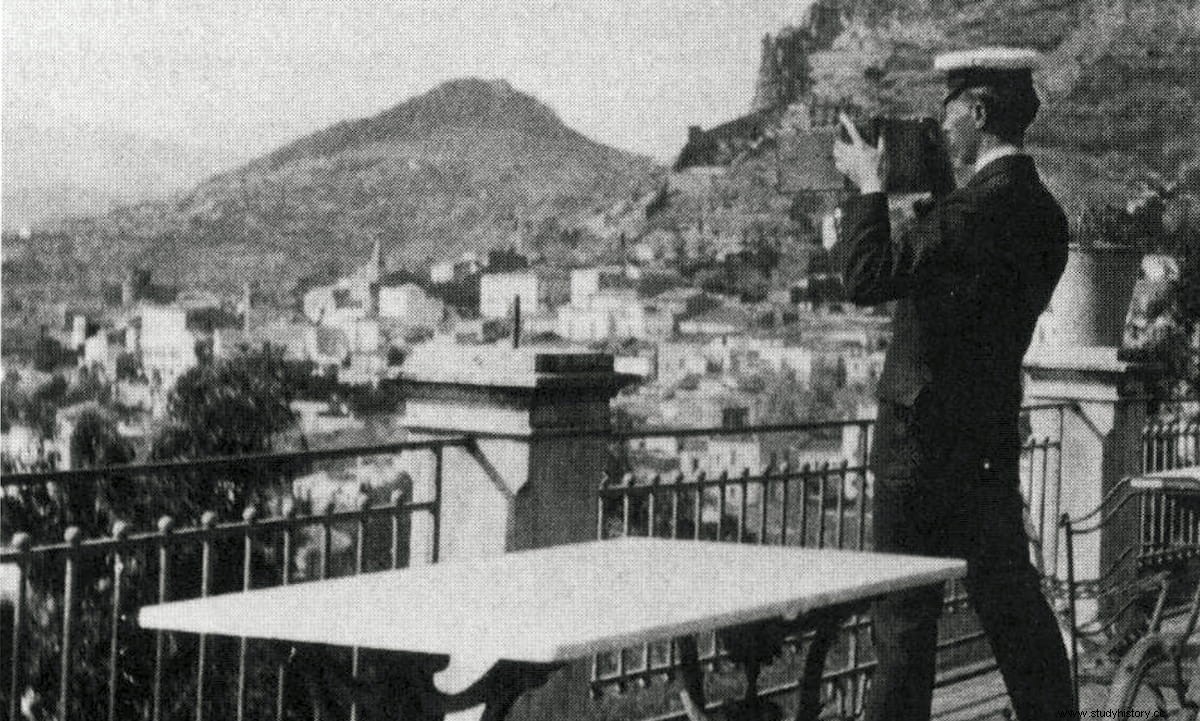
And the expedition was over. Juvelius, who had to return to his country in 1910 due to illness, took up his job as director of the Vyborg municipal library. In 1916, under the pseudonym Heikki Kenttä, he published a book of short stories titled Valkoinen kameeli (The white camel and other stories from the East), one of whose stories, The truth about the desecration of the mosque of Omar , was a personal recreation of what was experienced in Jerusalem, with fictitious names. In 1918 he was appointed director of the National Library of Finland, dying four years later of throat cancer.
His Swedish partner, Johan Millén, also gave the literary version of him with the work On the right path. Discovery of the Ancient City of David:The Ten Tribes of Israel Revealed . In it he used part of the material published by Vincent but, believing that it was not in the public domain, he manipulated it; where one described things with scientific sobriety, the other exaggerated them to the grotesque (among other things, he spoke of radiation emitted by the Ark of the Covenant, as they would also later explain in the film) and made clear his condition as a simple treasure hunter.

As for Montagu, he rejoined the army in 1914, due to the outbreak of the First World War, and although it seems that he did not fight in the trenches, he was decorated with the Croix de Guerre French. He then became President of the Plymouth Chamber of Commerce and Industry and in 1951, on the death of his elder brother, he inherited his family title as 5th Earl of Morley, plunging once more into his former life of frivolous extravagance. Despite rumors that he had a possible romance with Ava Astor, the widow of the American billionaire, he remained single until his death in 1962.
The Parker Expedition that he pretentiously led produced only a few minor pieces of pottery for archaeology, but, ironically, it ultimately succeeded in two unexpected ways. In the first place, he encouraged the financing of Raymond Weill's mission, which was profitable (among other things, he discovered in an old cistern the Inscription of Theodotus, the oldest known of a synagogue in the region). And second, with the issue of desecration, he created popular Palestinian consciousness.
Actually a third could be added. It was not only the spark that gave rise to Spielberg's film in 1981, but also the script for an episode (finally discarded) of the television series The Adventures of Young Indiana Jones , shows the then-nine-year-old protagonist joining Montagu Parker's digs and ending up on the run with him from an angry mob when they are discovered. The ark is not under the Temple Mount, his teacher Abner Ravenwood tells him, adding a prophetic wink:one day it will be a true archaeologist who finds it.
